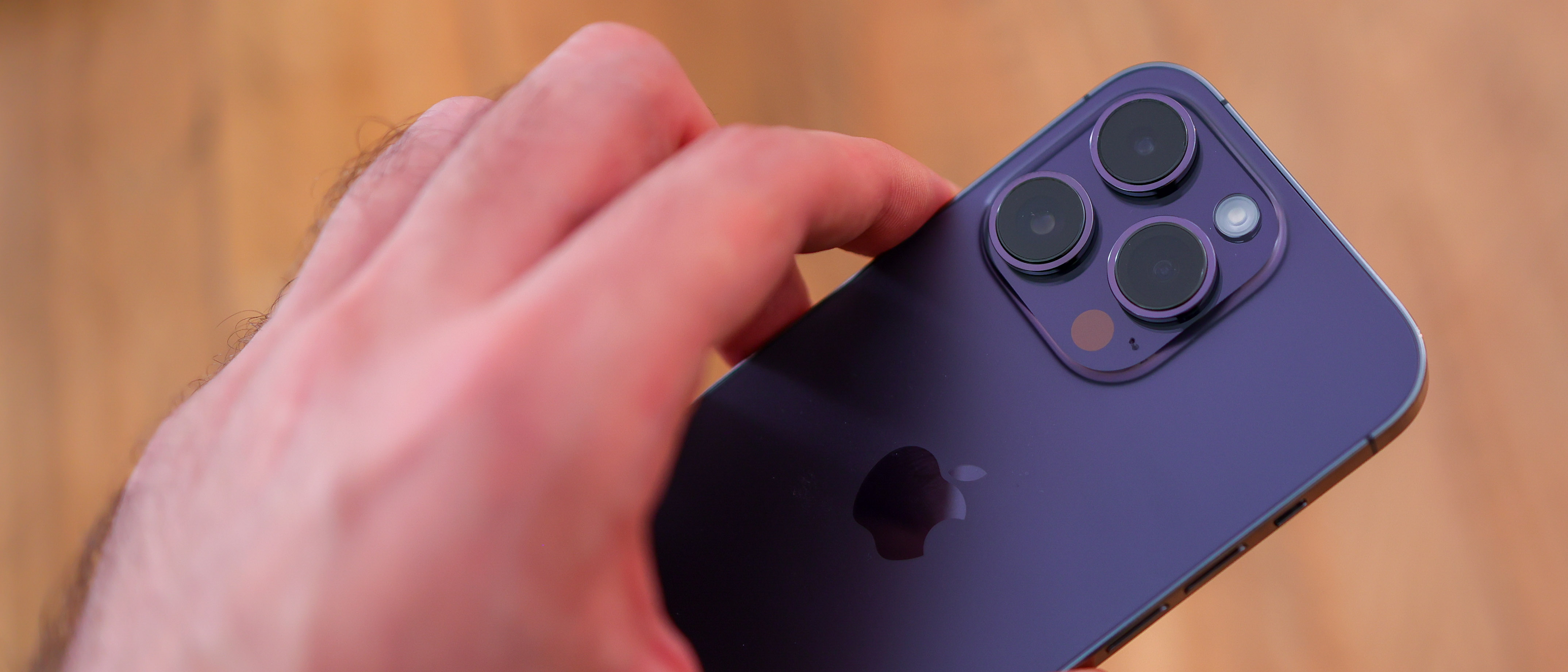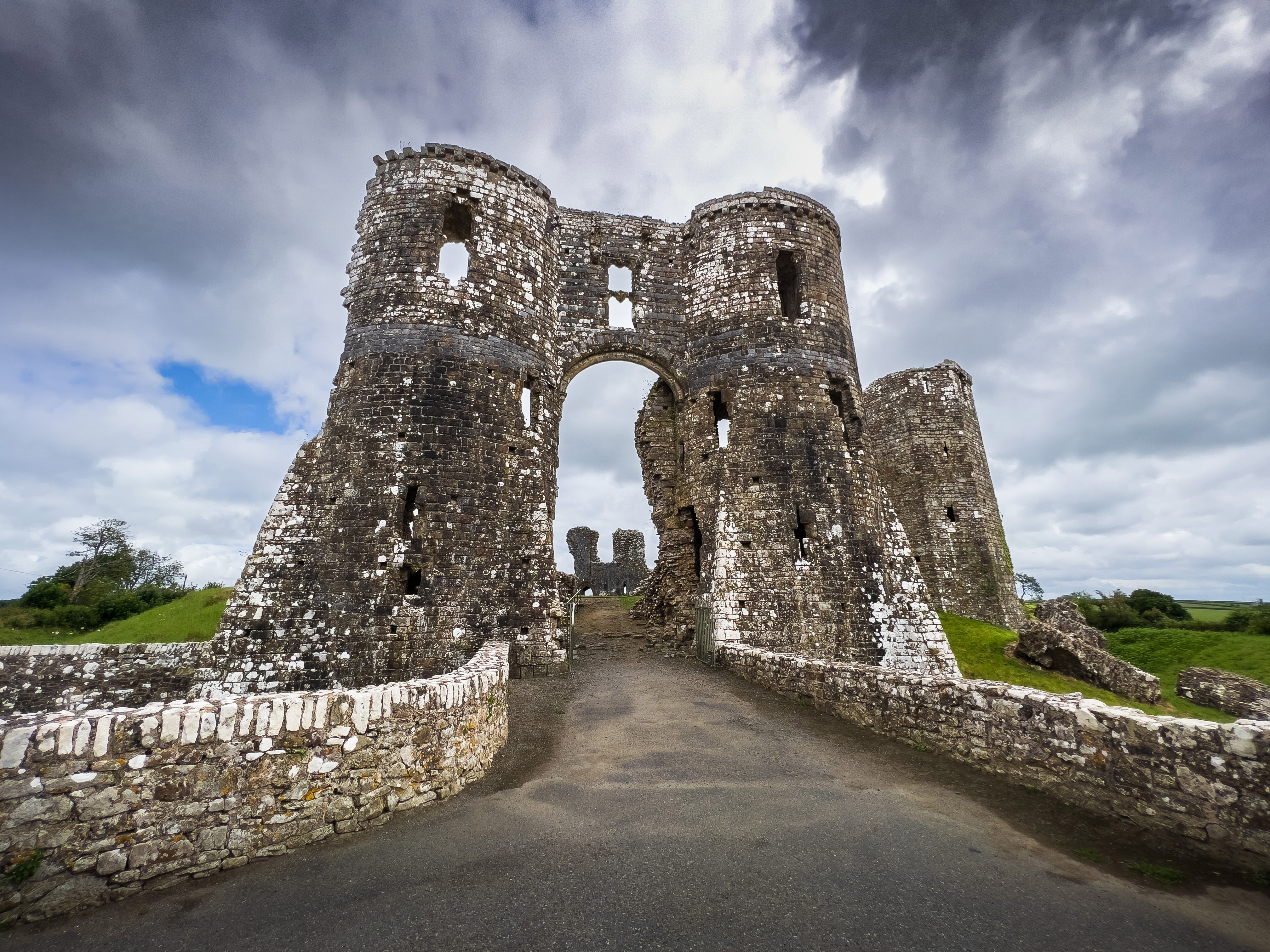Digital Camera World Verdict
The iPhone 14 Pro is probably the finest compact phone on the market. Many have tried – Asus with the Zenfone 9 and Sony with the Xperia 5 IV, but they can’t deliver an across-the-board premium experience that can rival that of the 14 Pro. With mighty performance and an all-day battery, there aren’t many chinks in Apple’s latest flagship’s armor, so while we’d have liked a better zoom range and closer-focusing primary camera, it’s still an overall win for Apple.
Pros
- +
Excellent camera performance
- +
RAW photos are loaded with detail
- +
Premium IP68 design
- +
Powerful internals
Cons
- -
No SIM slot for US customers
- -
Telephoto camera isn't class-leading
- -
Very expensive
Why you can trust Digital Camera World
The iPhone 14 Pro is Apple’s mightiest offering crammed into a pocketable package, and most exciting – it upgrades the finest iPhone camera offering with more pixels, a larger sensor, and a new video stabilization system. But can Apple fend off competition from stellar compact Android phones like the Xiaomi 12?
From the back, there’s not that much new about the iPhone 14 Pro, except for its Deep Purple color, introduced in 2022. Eagle eyes might notice its beefier camera bump, but it’s still a frosted-backed, stainless steel framed smartphone with virtually identical dimensions to the 13 Pro.
The Apple iPhone 14 Pro costs roughly the same as the Oppo Find X5 Pro and Xiaomi 12 Pro in the UK, and a bit less than the Samsung Galaxy S22 Ultra globally. But can Apple's new camera mix for its priciest iPhones to date make the 14 Pro and Pro Max – which pack identical optics – the best iPhones for photography, and possibly even the best camera phones of 2022?
The front of the phone features the first major update – the notch is out, and the Dynamic Island is in. A pill-shaped cutout at the top of the screen.
iPhone 14 Pro design and screen
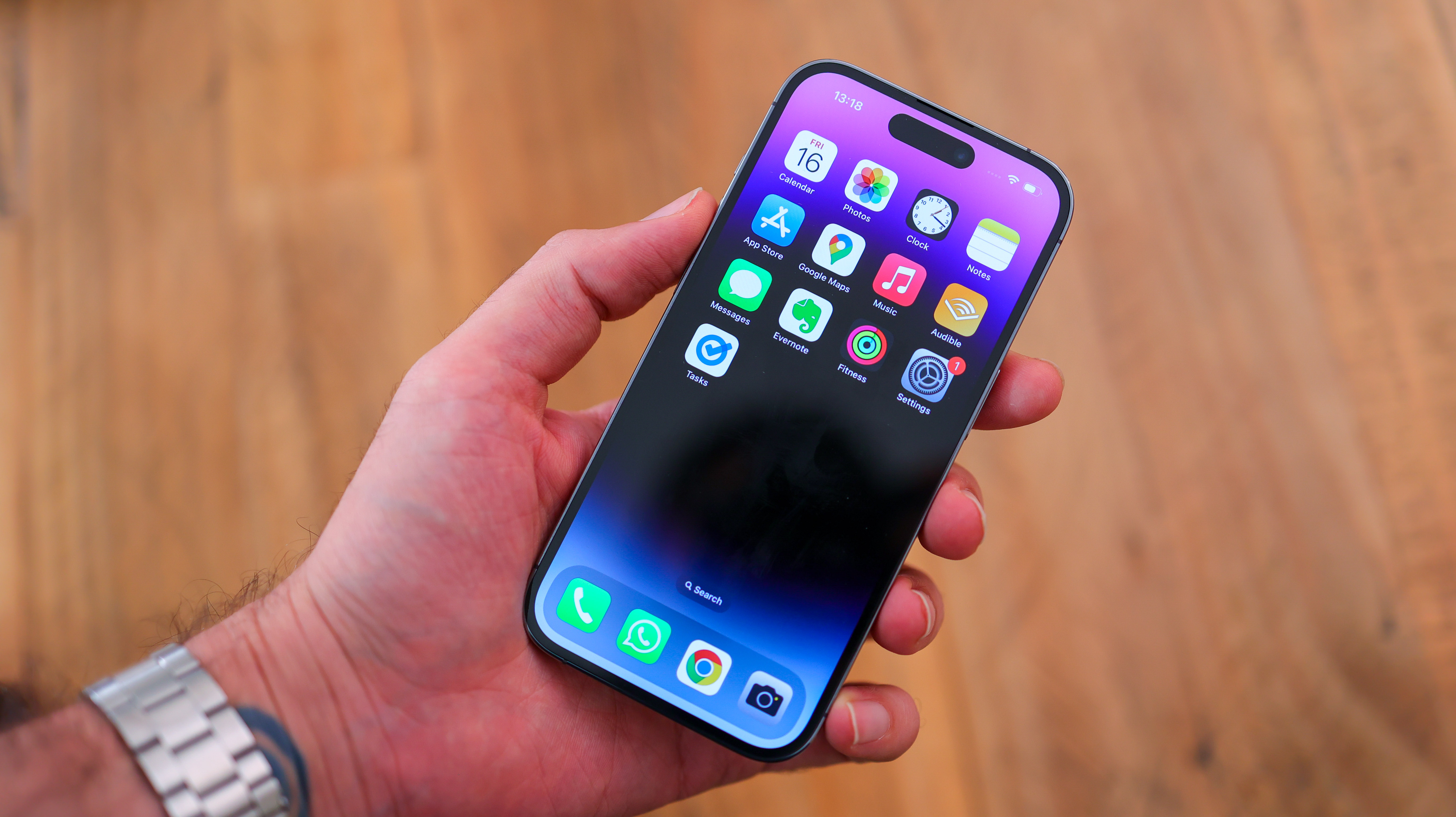
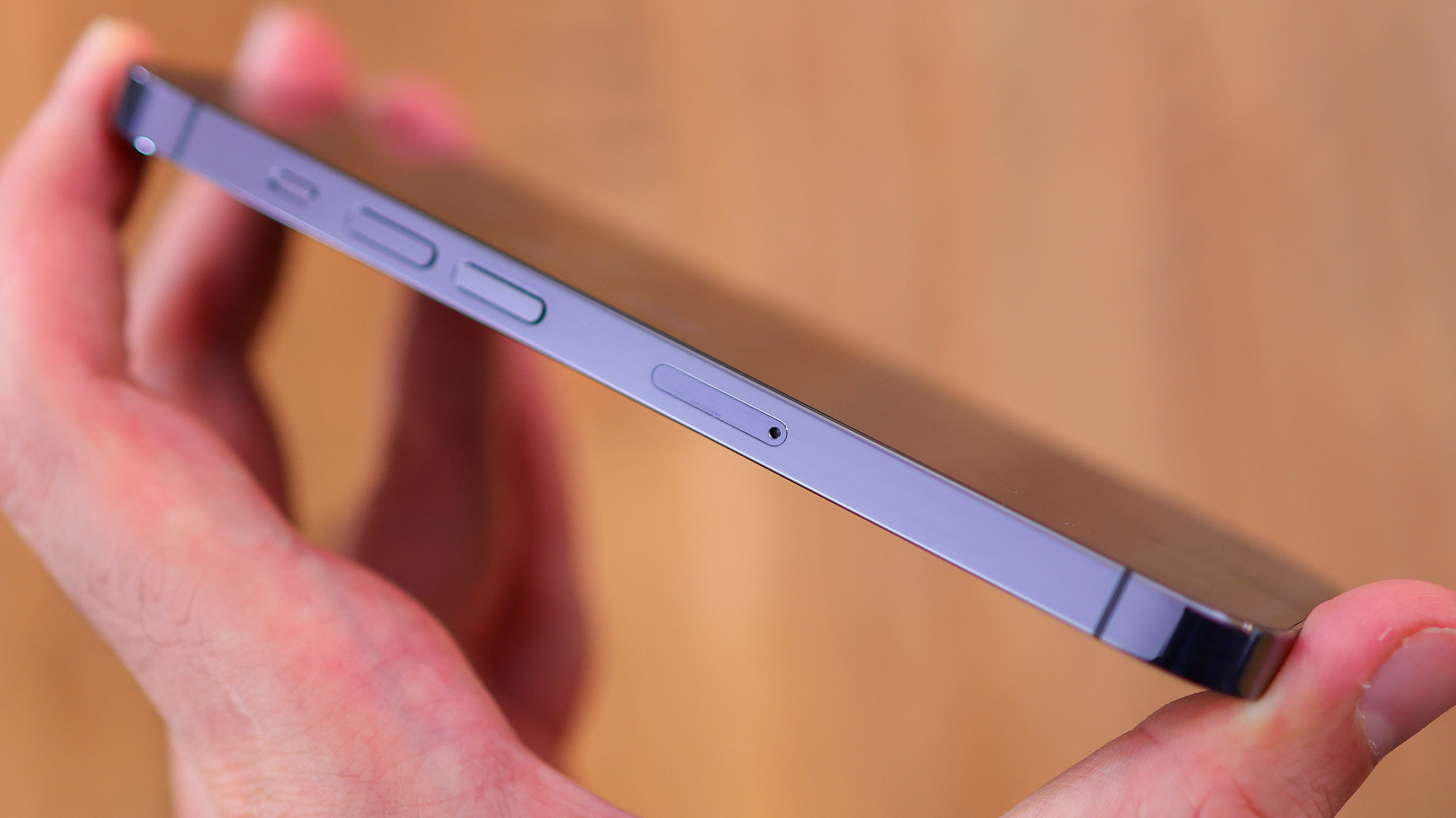
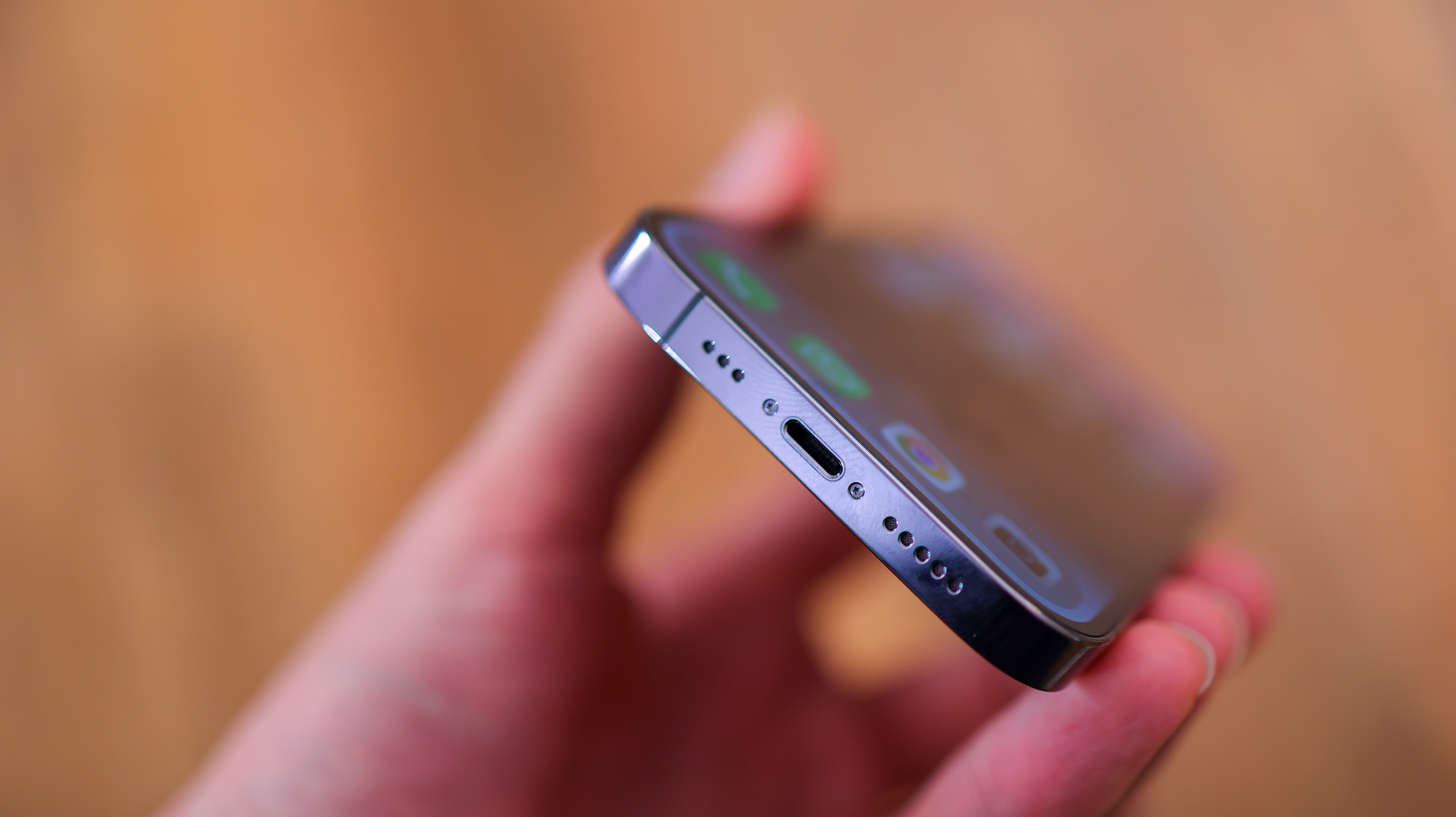
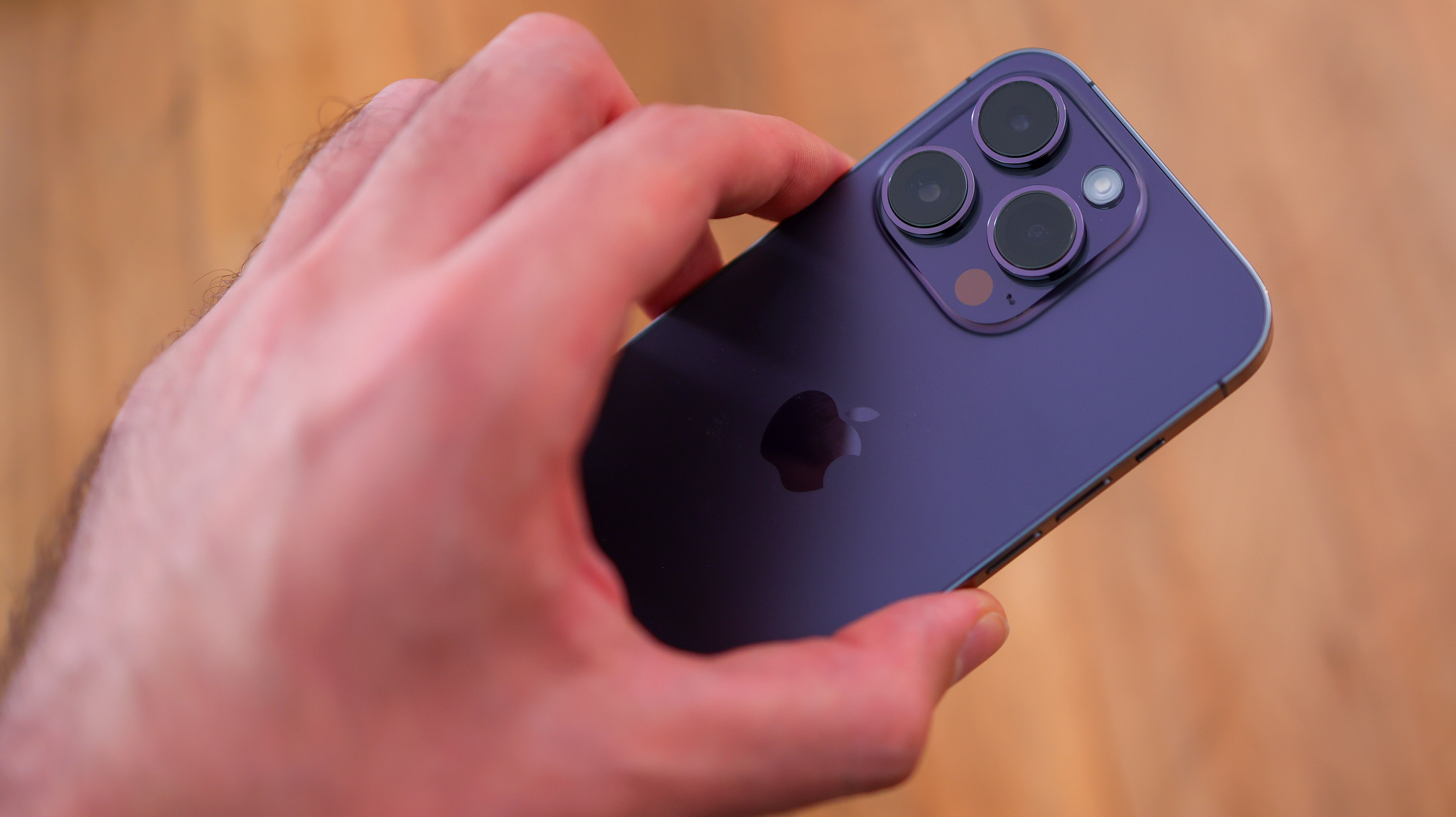
The iPhone 14 Pro's styling flips that of the vanilla iPhone on its head. While the iPhone 14 features matte sides and a shiny back – the 14 Pro's frosted back feels satiny and looks lustrous, while the polished stainless steel sides are shiny.
It looks very iPhone 13 Pro from behind, but it's all about the Dynamic Island from the front, helping the new iPhone 14 Pro stand out from the pack.
Available in a new Deep Purple color, you can also pick up the Pro in Gold, Silver, and Space Black, and all four options have that frosted glass back. Side-by-side with the 13 Pro, the new iPhone is a bit thicker thanks to that new camera sensor. Officially it measures 7.85mm deep, which sounds thin on paper, but in the flesh, it's around 11.5mm when factoring in that chunky camera bump.
It's got the same button configuration: a power button on the right, volume buttons on the left, and an alert slider. That said, iPhone 13 Pro cases won't quite fit the new model thanks to slightly different button positioning (check our guide to the best iPhone 14 Pro cases we have seen).
The new iPhone line is IP68 water resistant and is also protected by a scratch-resistant Ceramic Shield front panel of glass. You don't get a pre-fitted screen protector on the phone, nor do you get a case in the box, or a charger. But the Pro does ship with a USB-C to lightning cable that powers up the iPhone.
Weighing 206g, the 14 Pro is only a few grams heavier than the iPhone 13 Pro which launched last year, but much heavier than the 176g iPhone 14.
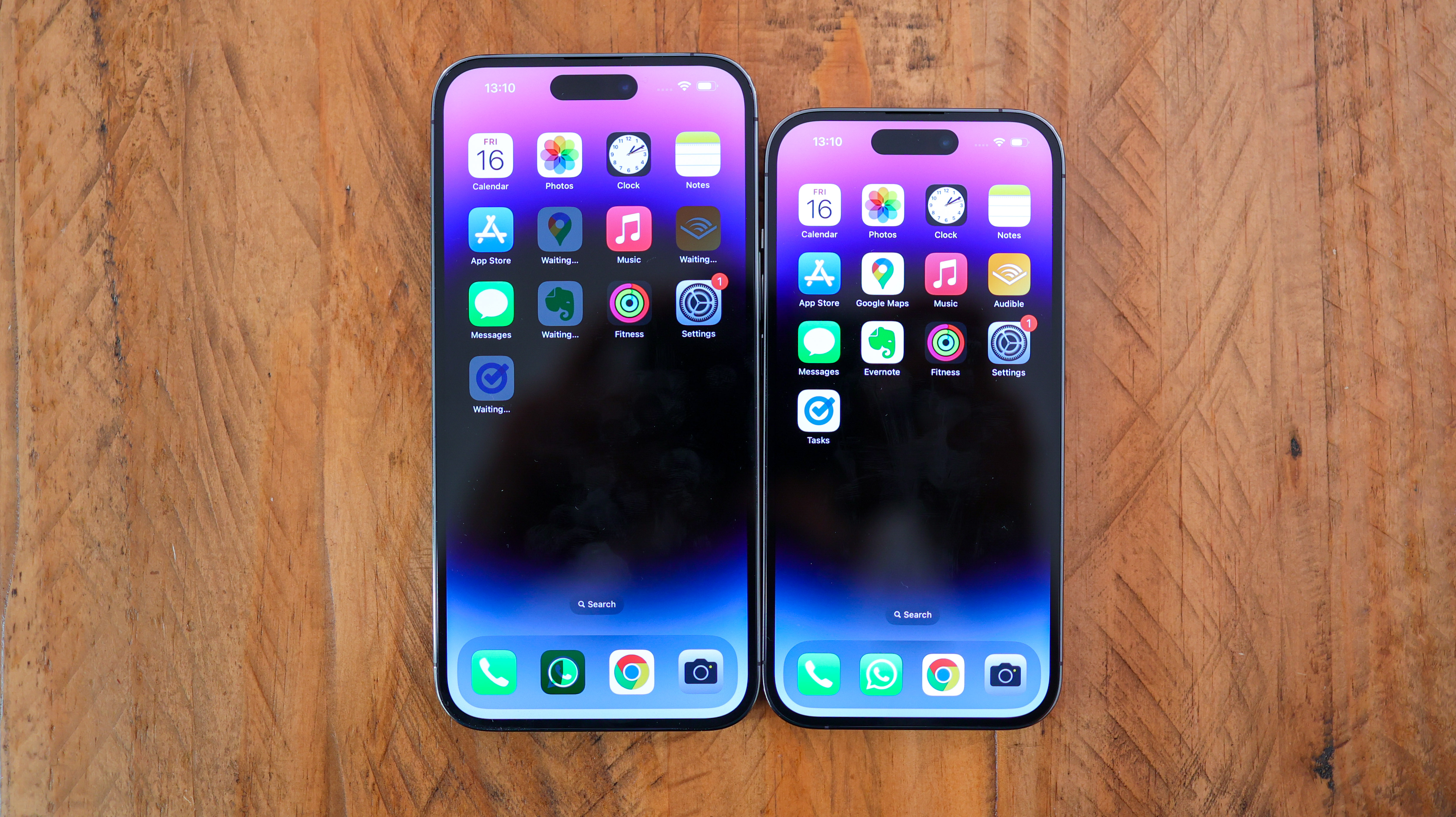
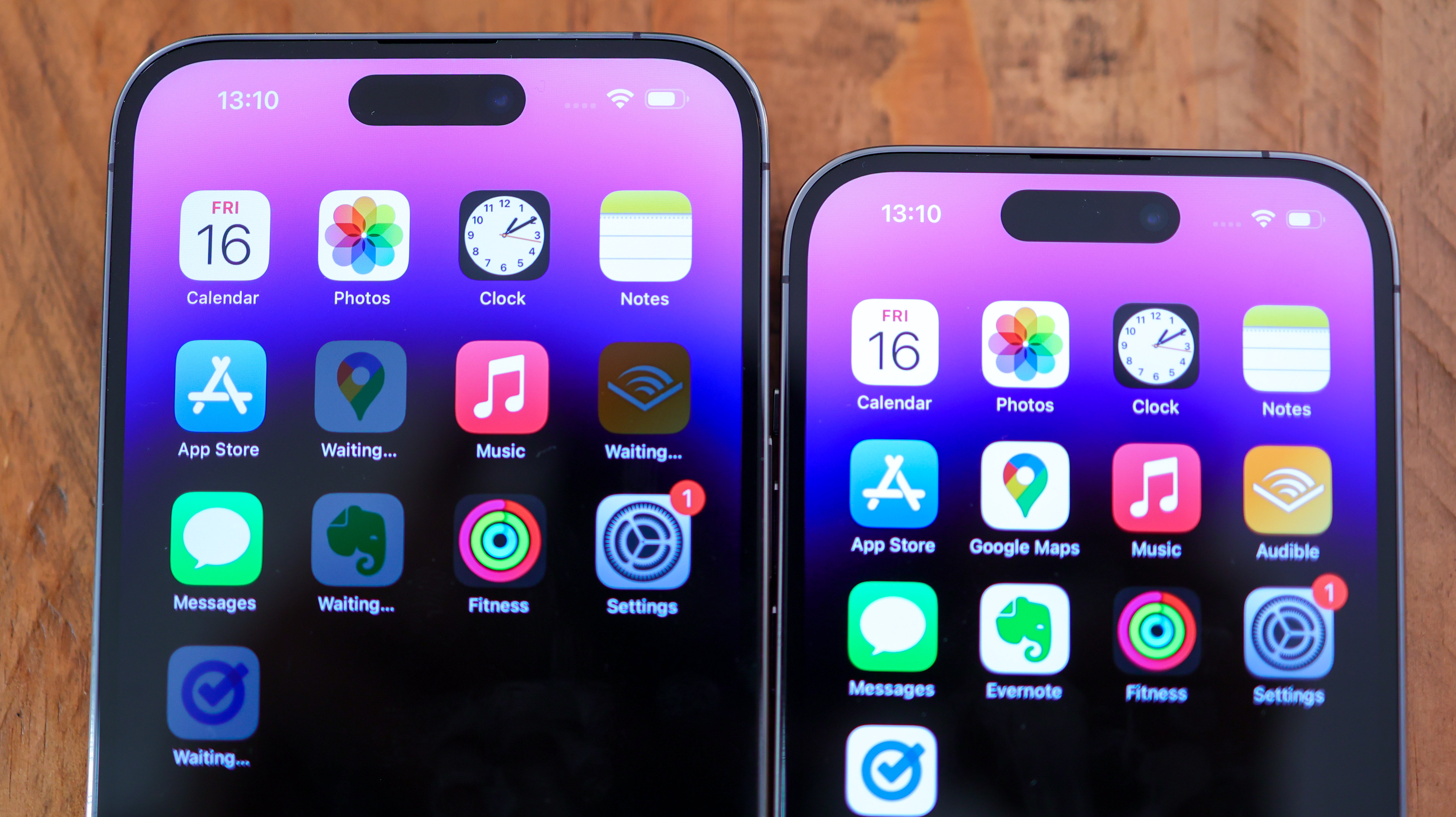
With a 6.1-inch screen, Apple's iPhone 14 Pro takes on the Samsung Galaxy S22, and other high-performing yet compact flagship phones. In the flesh, it looks stunning, and is best-in-class in key areas, with a maximum brightness of up to 2000 nits, bettering even Samsung's finest flagship displays.
The 14 Pro's Super Retina XDR display doesn't just get bright, it's also nice and sharp with a 2556x1179 resolution, with a pixel density of 460 pixels per inch. In the top center is the Dynamic Island, and the phone is also the first from Apple to support an always-on display.
Add HDR credentials and a 120Hz refresh rate to the mix, and the iPhone 14 Pro doesn't tread any new ground, but it does check all the flagship boxes. If you're big on watching content, we'd suggest thinking about the iPhone 14 Pro Max over the 14 Pro, though. The reason is that the Dynamic Island is the same size on both phones, so takes up a greater portion of the 14 Pro's screen given its smaller size – 6.1 inches versus the Pro Max's 6.7 inches.
iPhone 14 Pro camera specs
This year, Apple's launched the most impressive camera we've seen in an iPhone, upgrading both the resolution and sensor size of the main camera. While the iPhone 13 Pro and Pro Max feature humble 1/1.7-inch sensors, for 2022, Apple introduces a large 1/1.28-inch sensor in the iPhone 14 Pro.
The 14 Pro's larger sensor is matched with a 48MP high-resolution, an f/1.78 aperture lens with a 24mm focal length, second-generation sensor-shift optical image stabilization, a seven-element lens, and 100% focus pixels.
For the first time, the iPhone's camera competes with its Android counterparts when it comes to specs as well as performance.
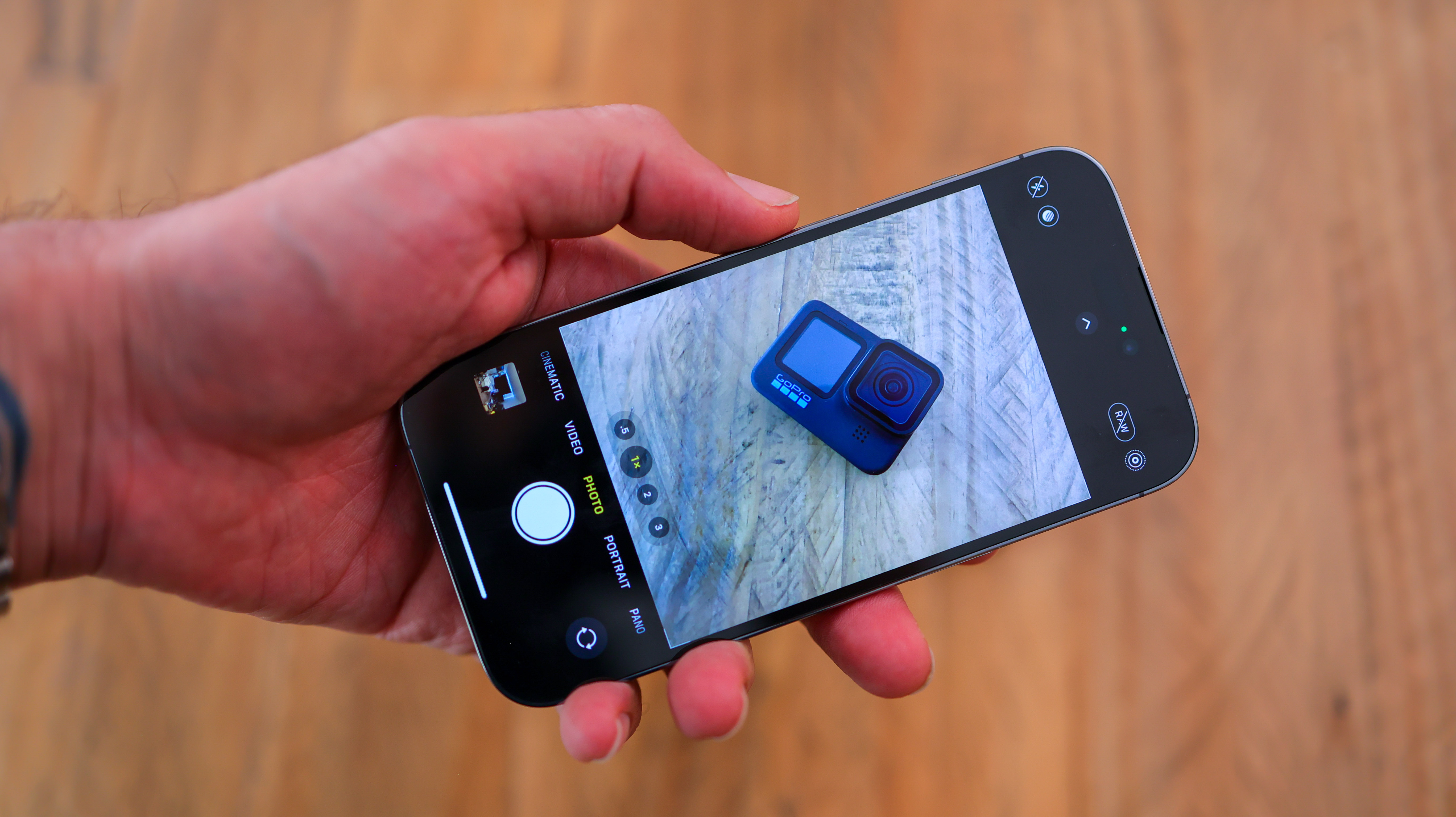
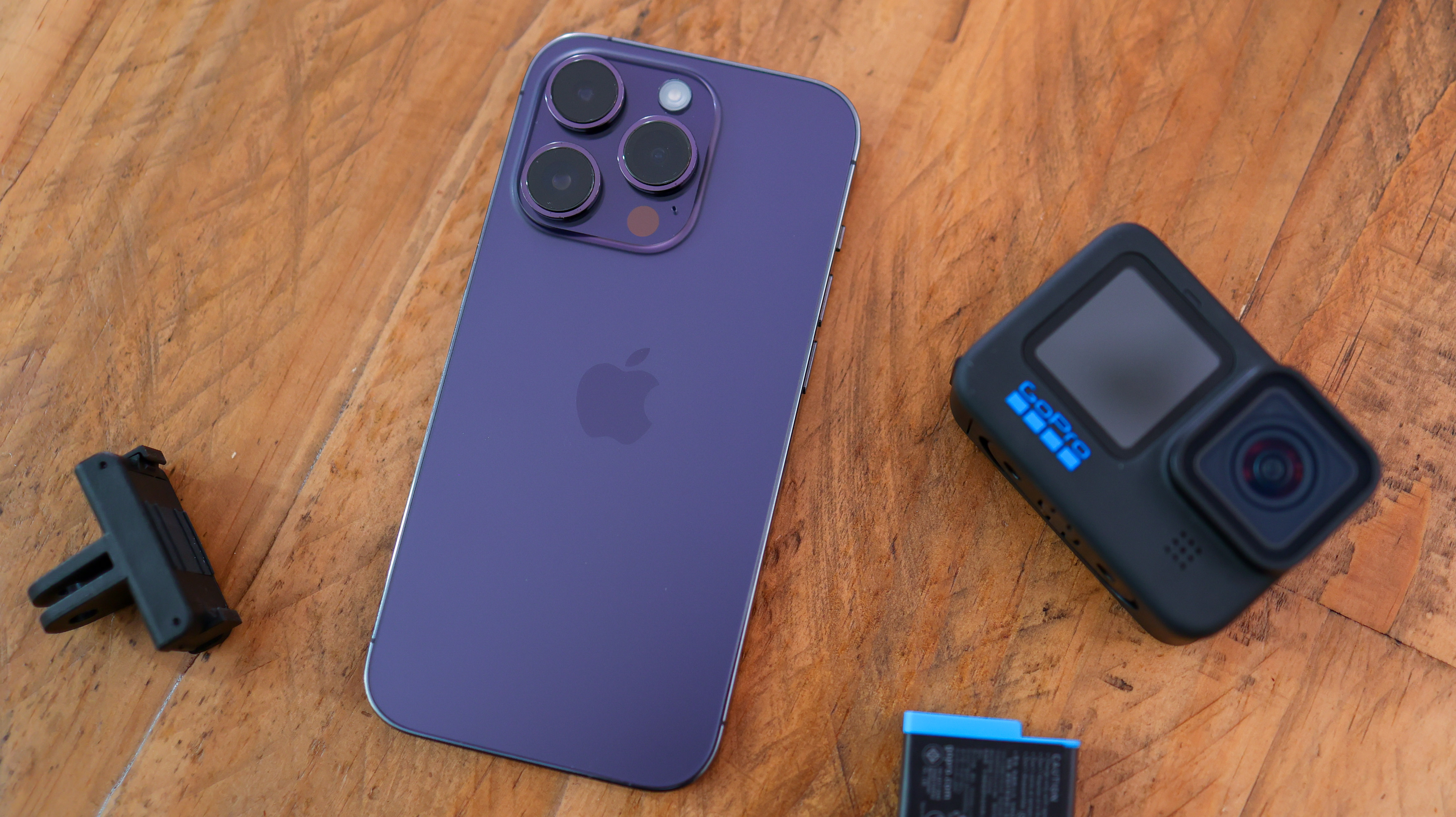
The secondary cameras are 12MP, so the primary camera on the 14 Pro shoots in 12MP by default, though captures large 48MP RAW photos.
Apple takes advantage of the main camera's high-resolution sensor when it comes to its telephoto offering. Adding a digital lens, the iPhone 14 Pro crops into the inner 12MP of the main camera sensor to create a native 12MP two-times telephoto image. This punches into 48mm – perfect for portraits.
The ultra-wide camera has also been upgraded, getting a sensor size bump to 1/2.55 inches, and matching that with a 12MP resolution and a 13mm focal length. It also benefits from 100% of its pixels being focus pixels, has a six-element lens and autofocus, and is used as the default camera when capturing objects nearer than around 20cm.
As far as zoom goes, the 14 Pro packs the same 12MP three times telephoto camera as the 13 Pro Max, with a 77mm focal length and an f/2.8 aperture, as well as OIS, and a six-element lens.
The iPhone 14 Pro's LiDAR scanner helps with night mode portraits, while the 14 series introduces a new action mode, which adds GoPro-style stabilization to 2.7K video content.
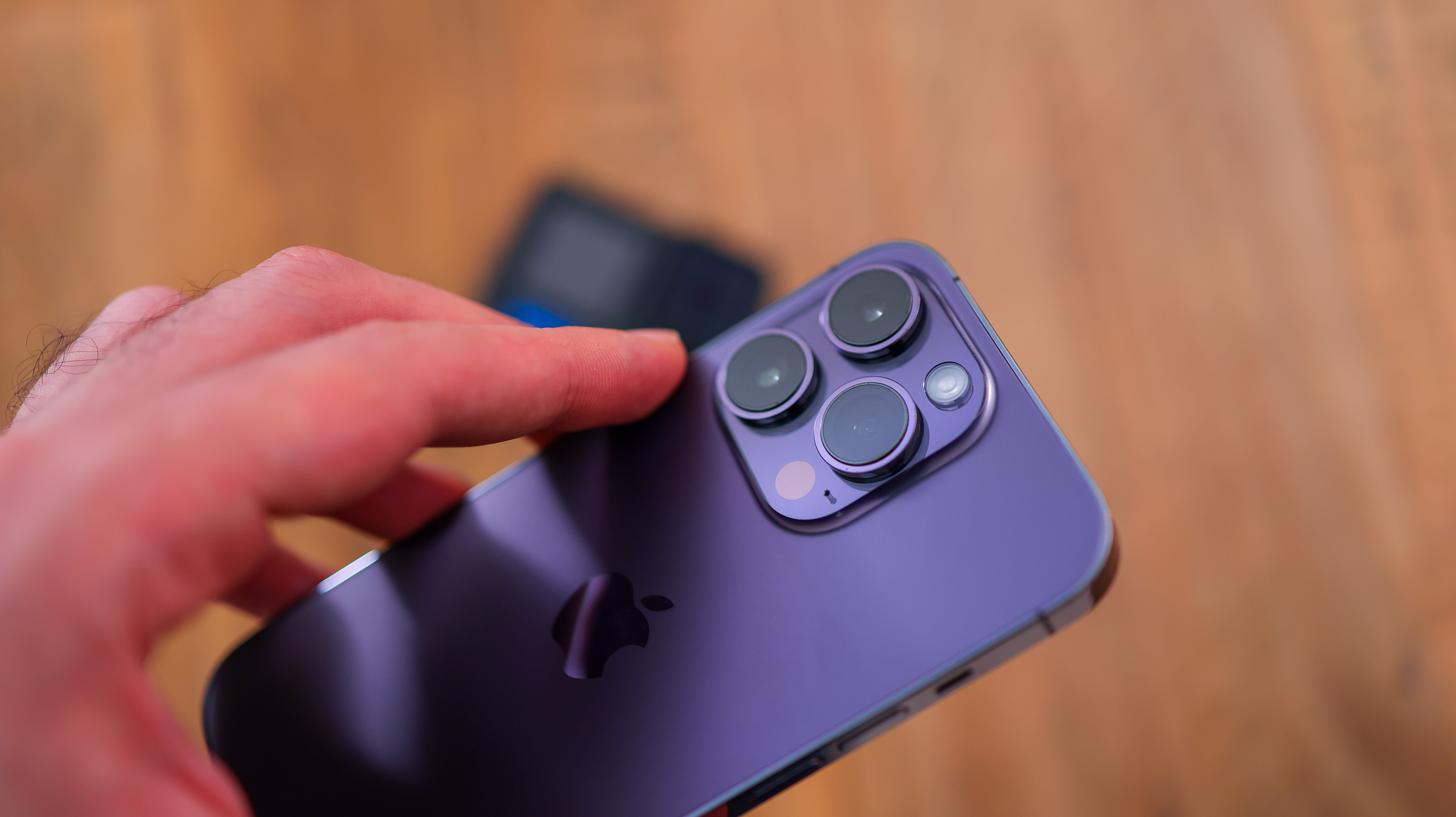
Apple's selfie camera, which has been updated with autofocus, unfortunately, doesn't appear to pack a new, larger sensor or benefit from a megapixel bump. Instead, it features the same 12MP camera with an f/1.9 aperture introduced on the iPhone 11 Pro in 2019, only now, it can focus on near or far objects.
iPhone 14 Pro camera review
You can see the three optical focal lengths of the iPhone 14 Pro below in the first image, and if you scroll through the pictures, the photos taken at the four selectable ranges within the UI – 0.6x, 1x, 2x, and 3x.
This new additional 2x option is great to have, and in well-lit environments, captures detailed 12MP photos.
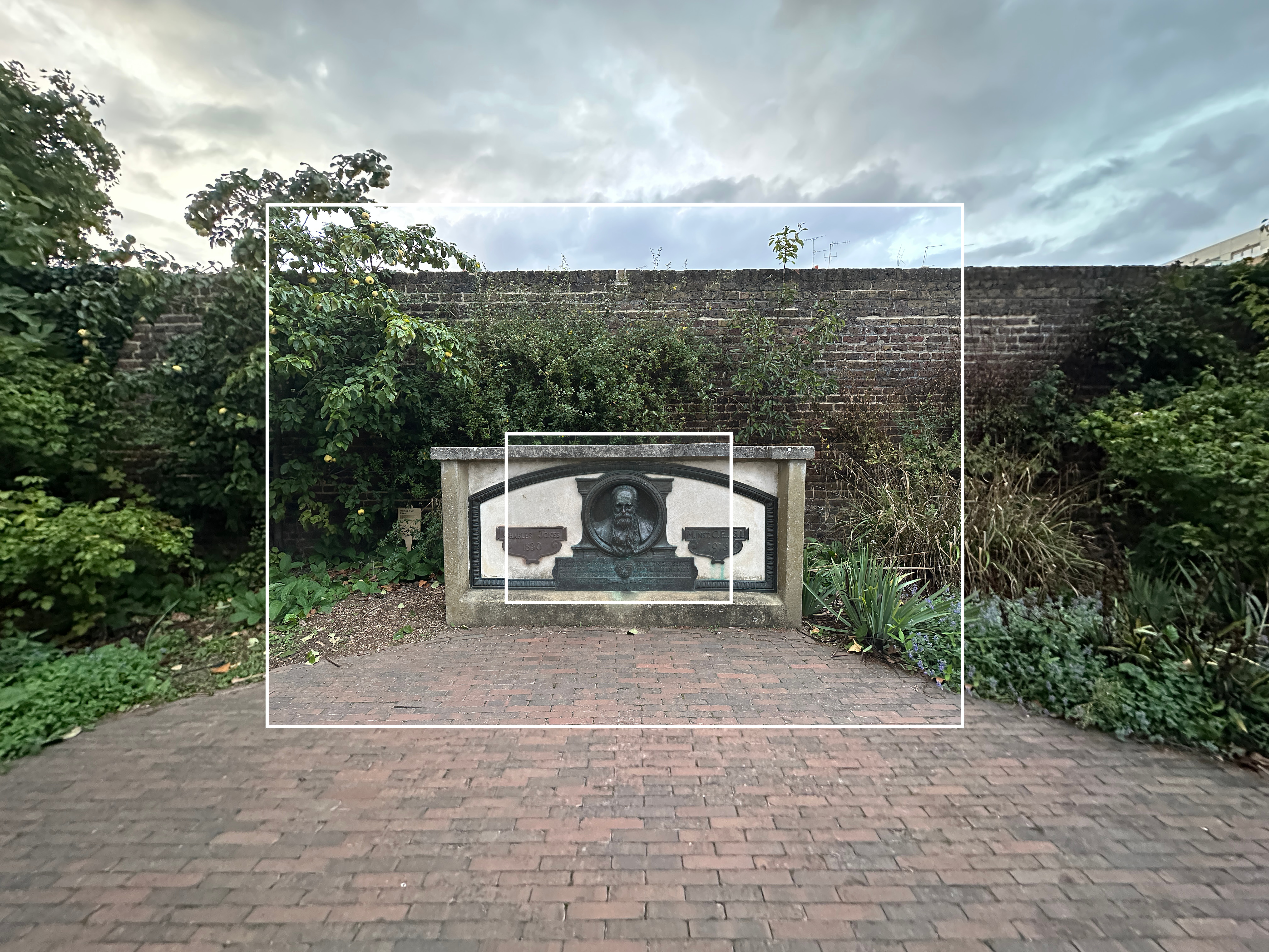

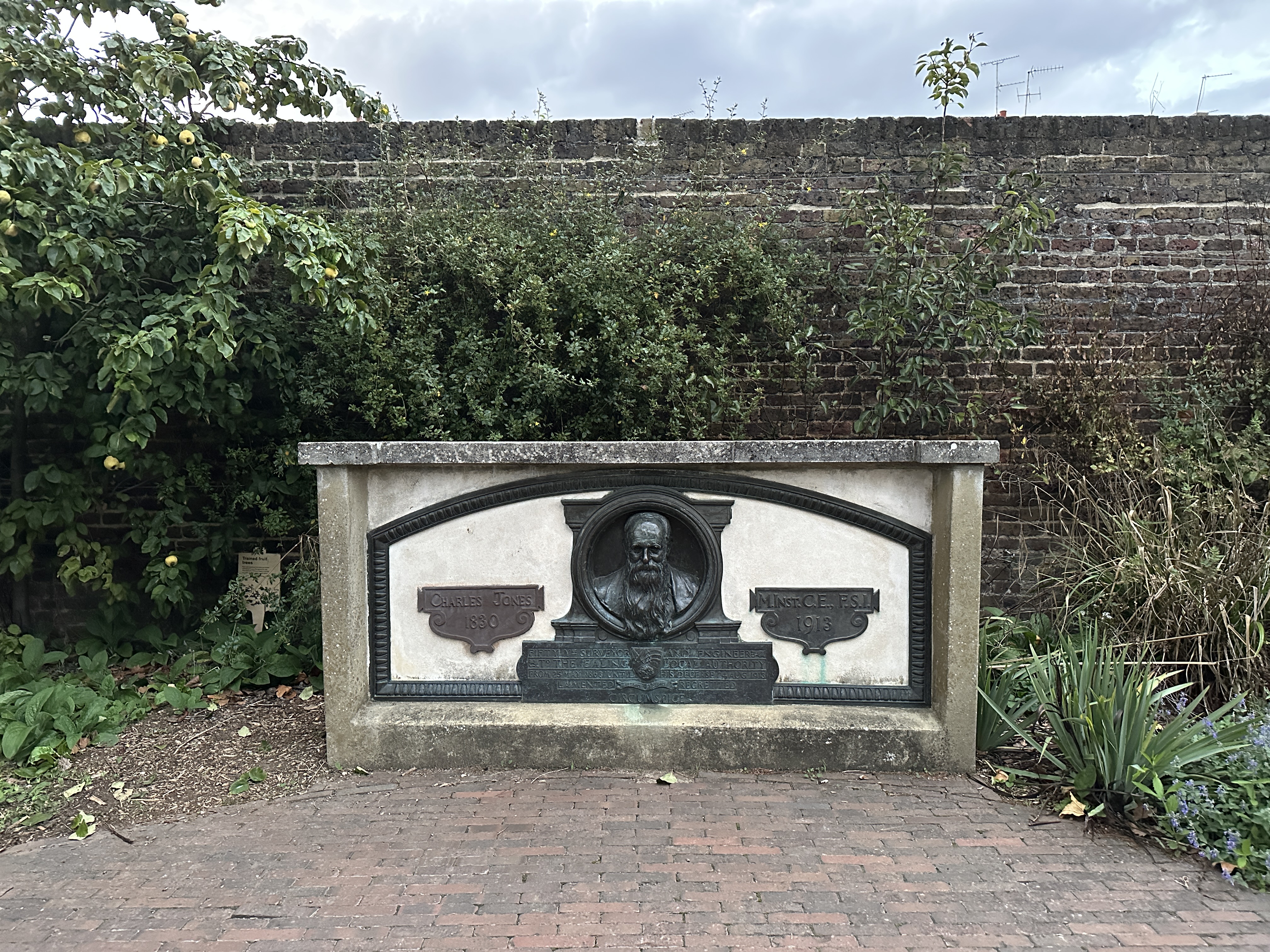


The new main camera on both the 14 Pro and 14 Pro Max capture with a slightly wider angle than the 13 Pro and 13 Pro Max. Wider angles usually produce a less shallow depth of field when taking close-up photos, however, the 14 Pro stacks up well when it comes to capturing soft, dappled backgrounds thanks to its larger sensor.
When you get close to an object, the camera automatically switches to the ultra-wide for macro capture nearer than around 6cm. You have to manually go into the settings and enable an option to override this, which we'd suggest doing. When you do, though, you'll realize that the 14 Pro's primary camera is actually a worse performer than the 13 Pro, unable to focus as close and in turn, failing to deliver as much subject detail in automatic mode.


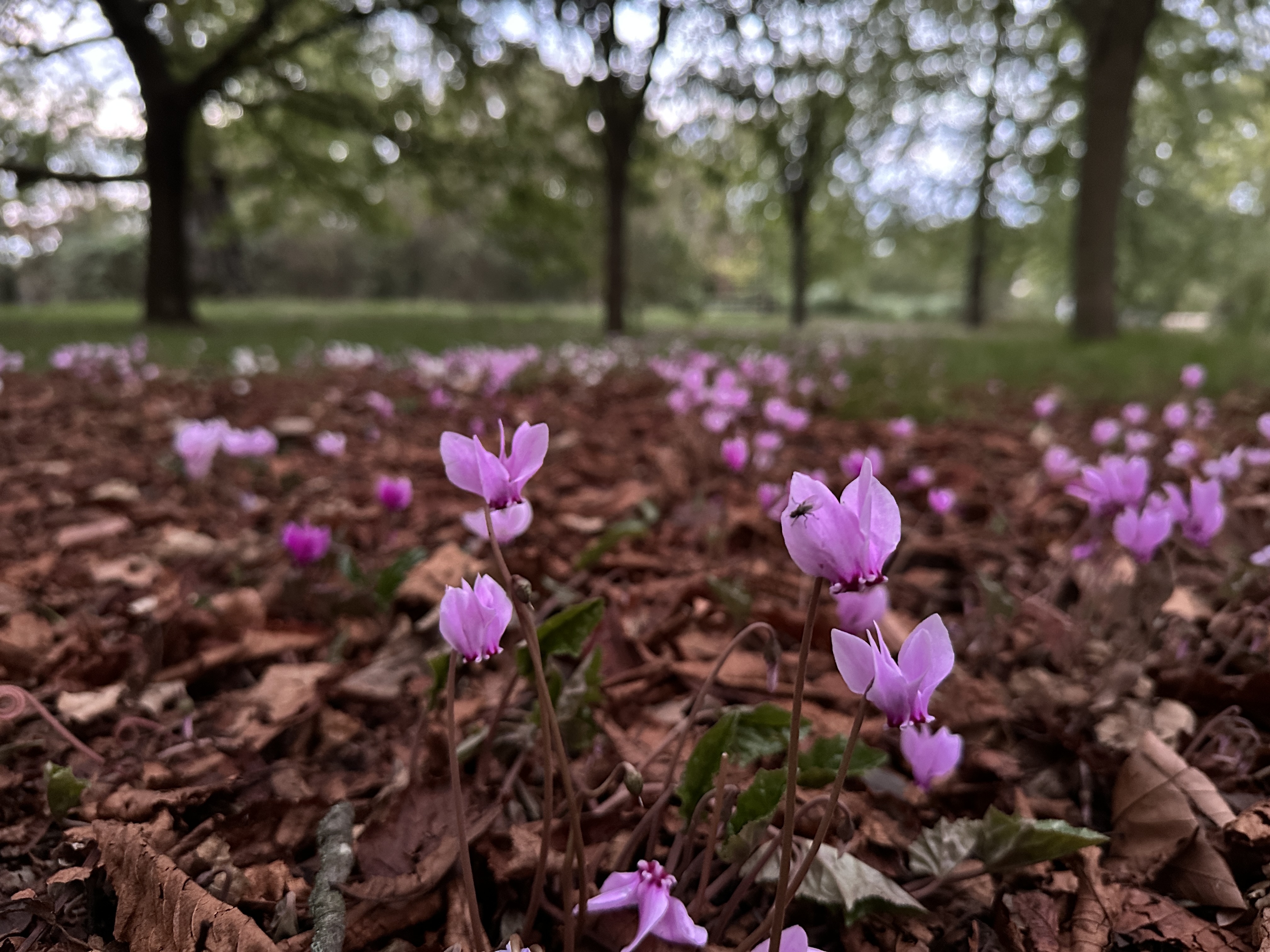
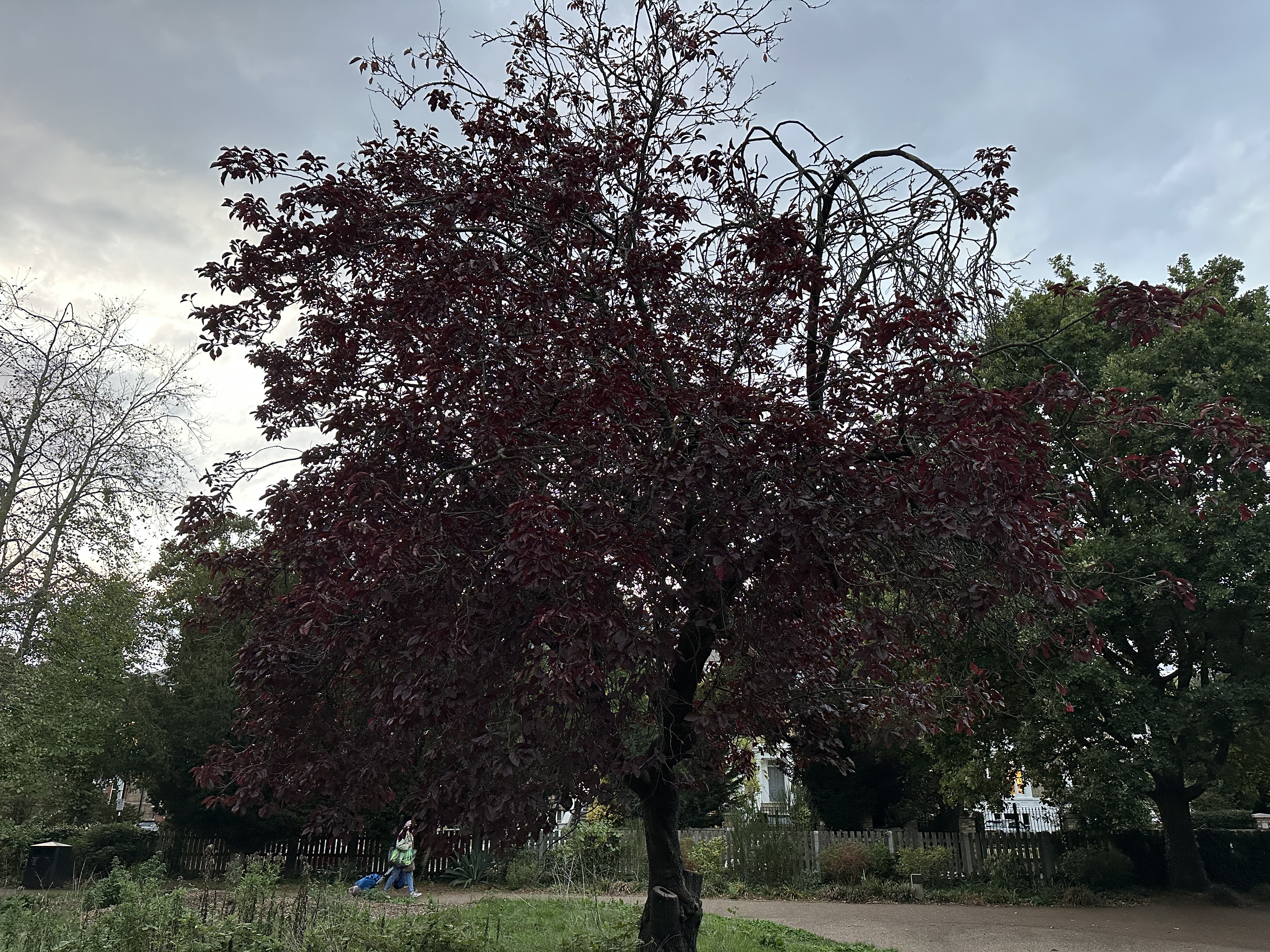


The iPhone 14 Pro enjoys the most natural-looking processing we've seen from an iPhone to date. There are still options to fire up a high-contrast mode or vibrant mode, but out of the box, things look relatively neutral.
Specifically, compared to the 13 Pro Max and non-Pro iPhones, the 14 Pro Max dials back contrast but still creates a dynamic, pleasing image that's full of detail. This is specifically the case when it comes to the main camera. Its photos are still a bit crispier than the Pixel 6 Pro's, as you can see below, but that's no bad thing for anyone who wants instantly shareable punchy shots.
All three cameras, which shoot at four preset focal lengths, do a very good job when it comes to white balance and exposure. Colors across the three cameras are consistent in all but the most challenging conditions, and the dynamic range is strong too.
There's no getting around the fact that, while the ultra-wide and primary cameras have seen huge upgrades, the telephoto camera falls behind much of the competition, including the Honor Magic 4 Pro and Xiaomi Mi 11 Ultra. Though on a small phone, there's less space for a periscope zoom, and no compact competition delivers in this area except the Xperia 5 III.
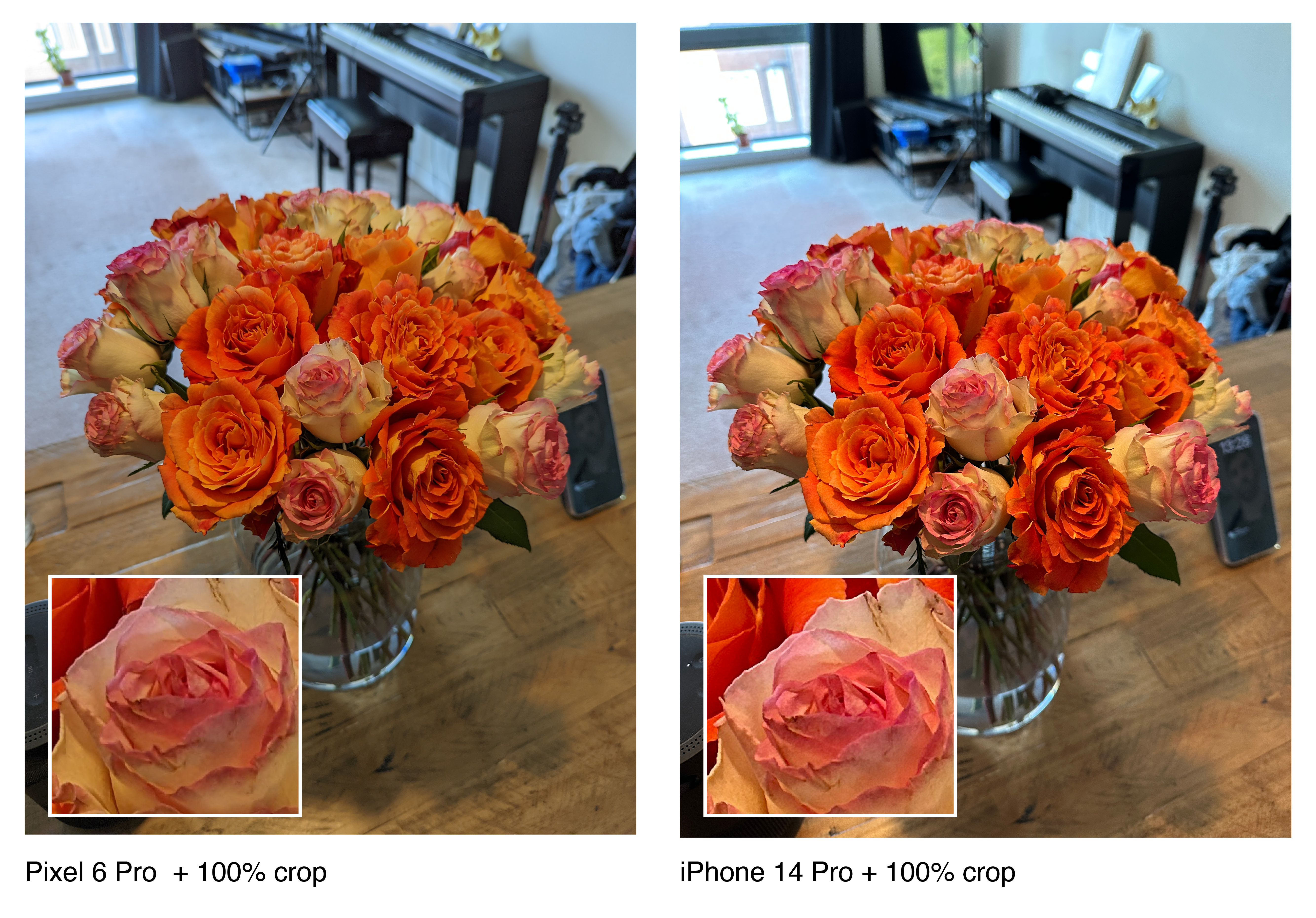
Nighttime and mixed light photography is another area the iPhone 14 Pro does a great job. It's able to intelligently assess how long to keep the shutter open with its automatic night mode, recognize if the phone is steadied on a surface, and create an evenly exposed photo free of clipping and detail-rich shadows.
RAW capture on the iPhone 14 Pro is one of the phone's highlights. Captured at 48MP, as you can see in the example below, the new iPhone produces photos that are much better suited to cropping than the 12MP RAW photos from the iPhone 13 Pro Max. The photo below shows how much you can crop into a 48MP RAW photo captured on a steady surface.
Matched with an Apple Watch, which can act as a remote shutter complete with a wrist-based viewfinder, the 14 Pro is an excellent photography tool that will save group photos from their usual mediocrity.
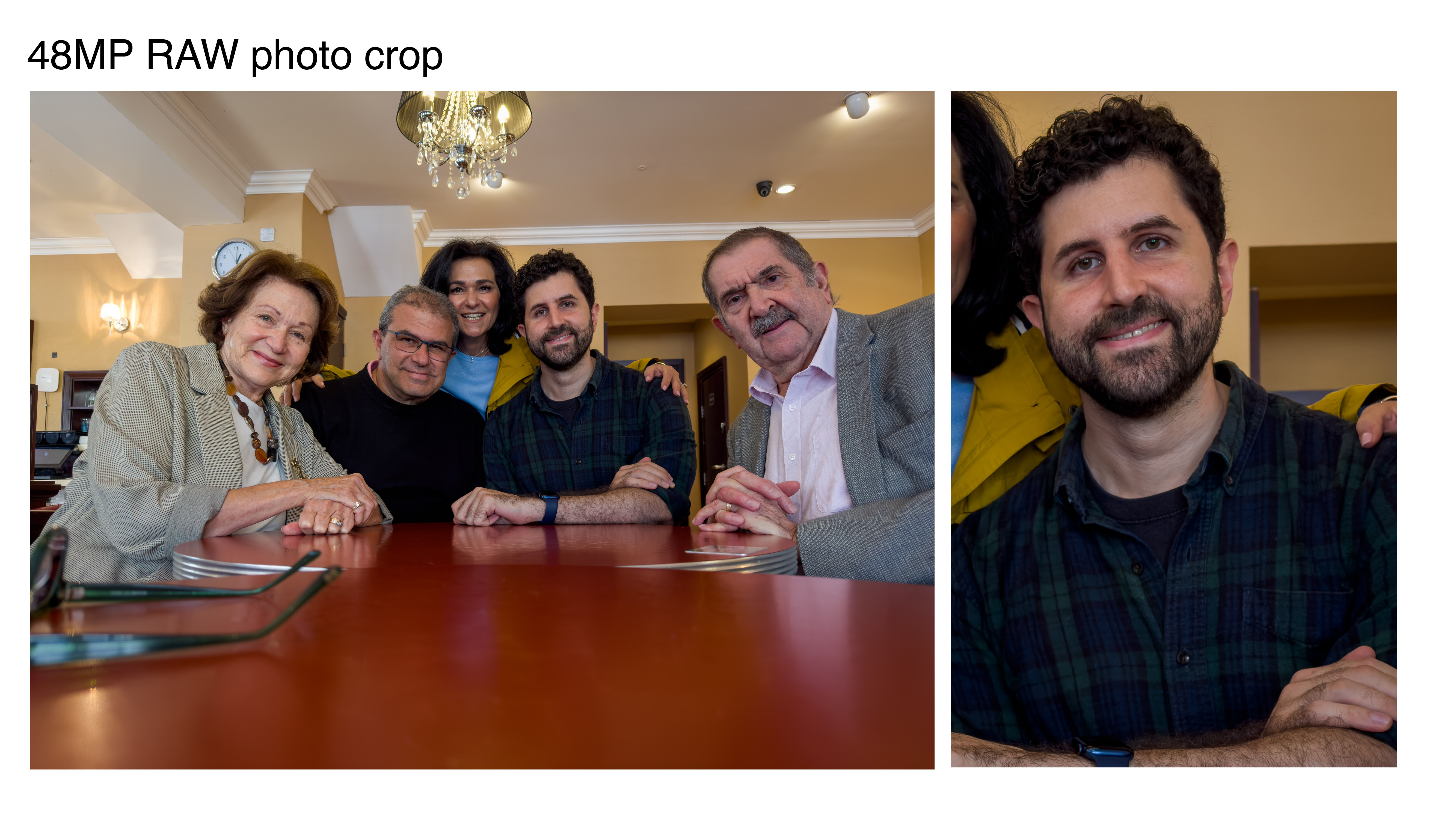
On top of an excellent portrait mode on the new iPhone 14 Pro, complete with impressive layer detection and versatile effects, the phone brings back Cinematic Mode, which is a video portrait mode of sorts, as well as Panorama, Slow-mo, and Time-lapse.
Frustratingly, there's no Pro Mode out of the box, though you can download third-party apps that enable manual photography and video capture, and we'd suggest photography enthusiasts do this.
Video shot on the iPhone 14 Pro using the primary camera looks great, even when the lighting isn't perfect. The ultra-wide and telephoto cameras aren't quite so capable in darker scenes, and neither is the Action Mode, which fires up near-GoPro-grade levels of stabilization to keep the shot steady. Still, when the light is bright it's a welcome addition that does a good job of holding everything together.
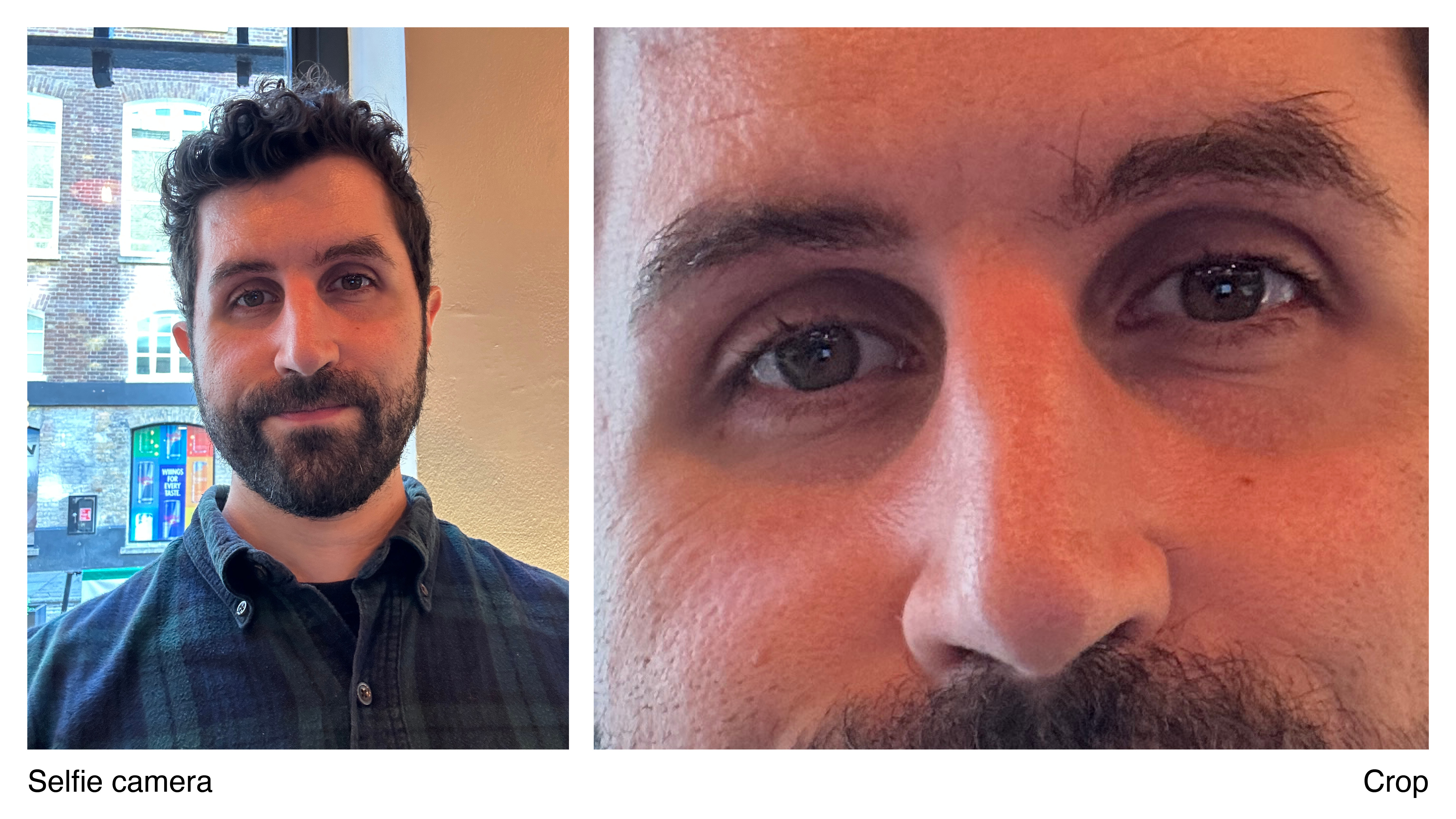
The 14 Pro Max's selfie camera has been upgraded with autofocus, but it doesn't feature a larger sensor or a wider aperture than that of its predecessors, and in turn, its core photo quality is only incrementally better than that of past iPhones when it comes to detail and low-light performance. Steady it and get your subjects to keep still, and it will perform admirably. Dimly lit scenes with moving subjects, however, won't produce a winning shot.
iPhone 14 Pro additional specs
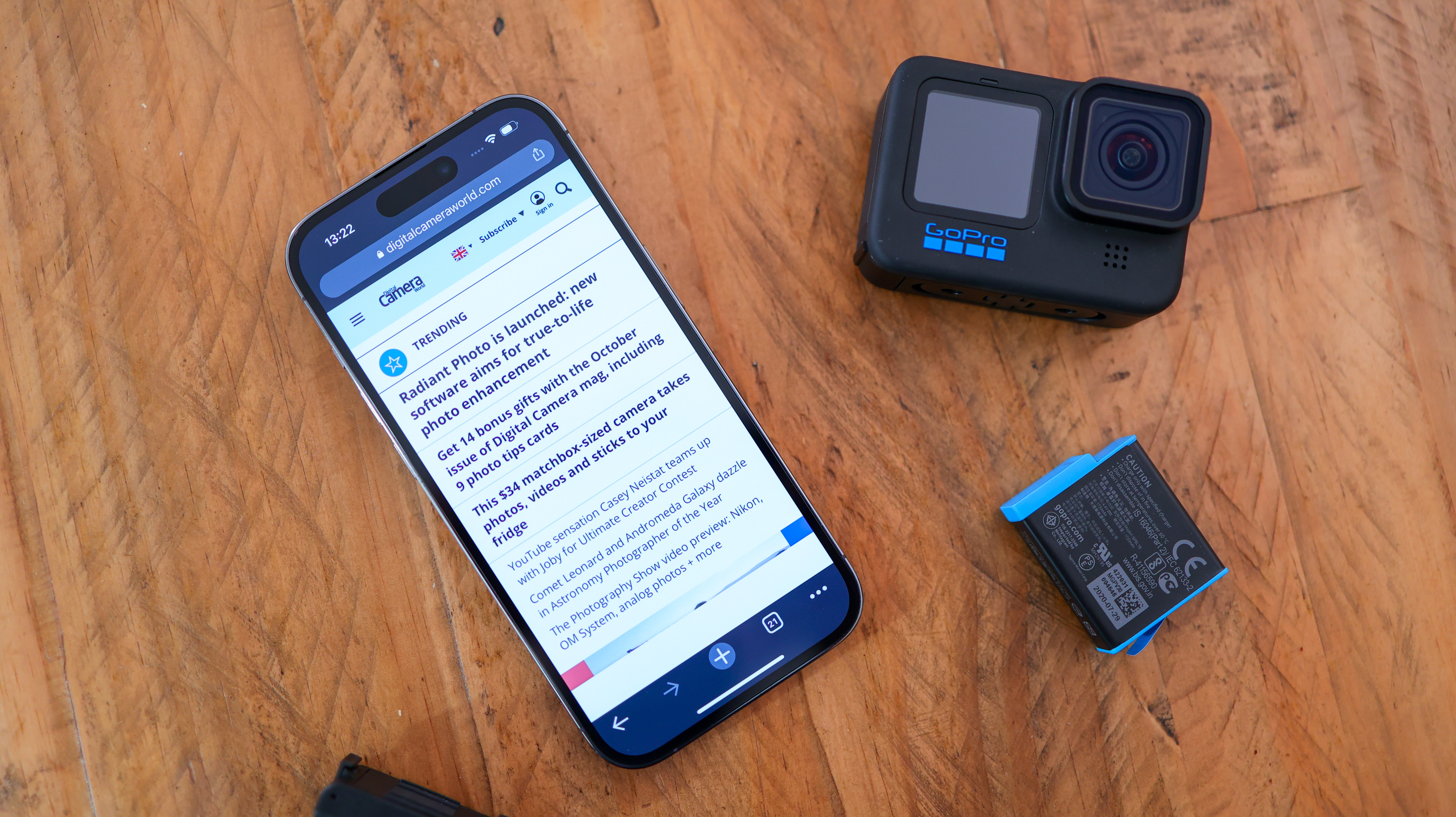
The new Apple A16 Bionic chip powering the iPhone 14 Pro is the firm's most powerful to date, unsurprisingly. This means the phone, which runs iOS 16 runs like a dream. Available with 128GB storage as a starting capacity, and packing as much as 1TB, in its highest-capacity guise, the iPhone 14 Pro starts at $1,099 / £1,099, and can cost as much as $1,649 / £1,649.
The 14 Pro charges up to 50 percent in as little as 30 minutes with the 20W charger, and takes a little over 90 minutes to charge fully. The phone also powers up wirelessly through traditional Qi charging at 10W, and using a MagSafe charger, that number climbs to 15W.
The phone also lasts a full day with moderate use. While the 14 Pro Max definitely lasts longer, so would be our suggestion for power users, unless you're gaming, watching, or messaging for hours non-stop, the Pro should still get you to 8pm. Add the convenience of MagSafe to the mix, and you shouldn't have any trouble going from morning to night.
With 5G connectivity and eSIM support globally, US customers lose out on the SIM card tray altogether, while global customers all gain access to a new satellite communication system and crash detection.
The first feature connects the iPhone to a satellite in order to contact emergency services when you have no signal. As for the second, it detects the high impact of a crash, and automatically calls for help, unless you stop your phone in time.
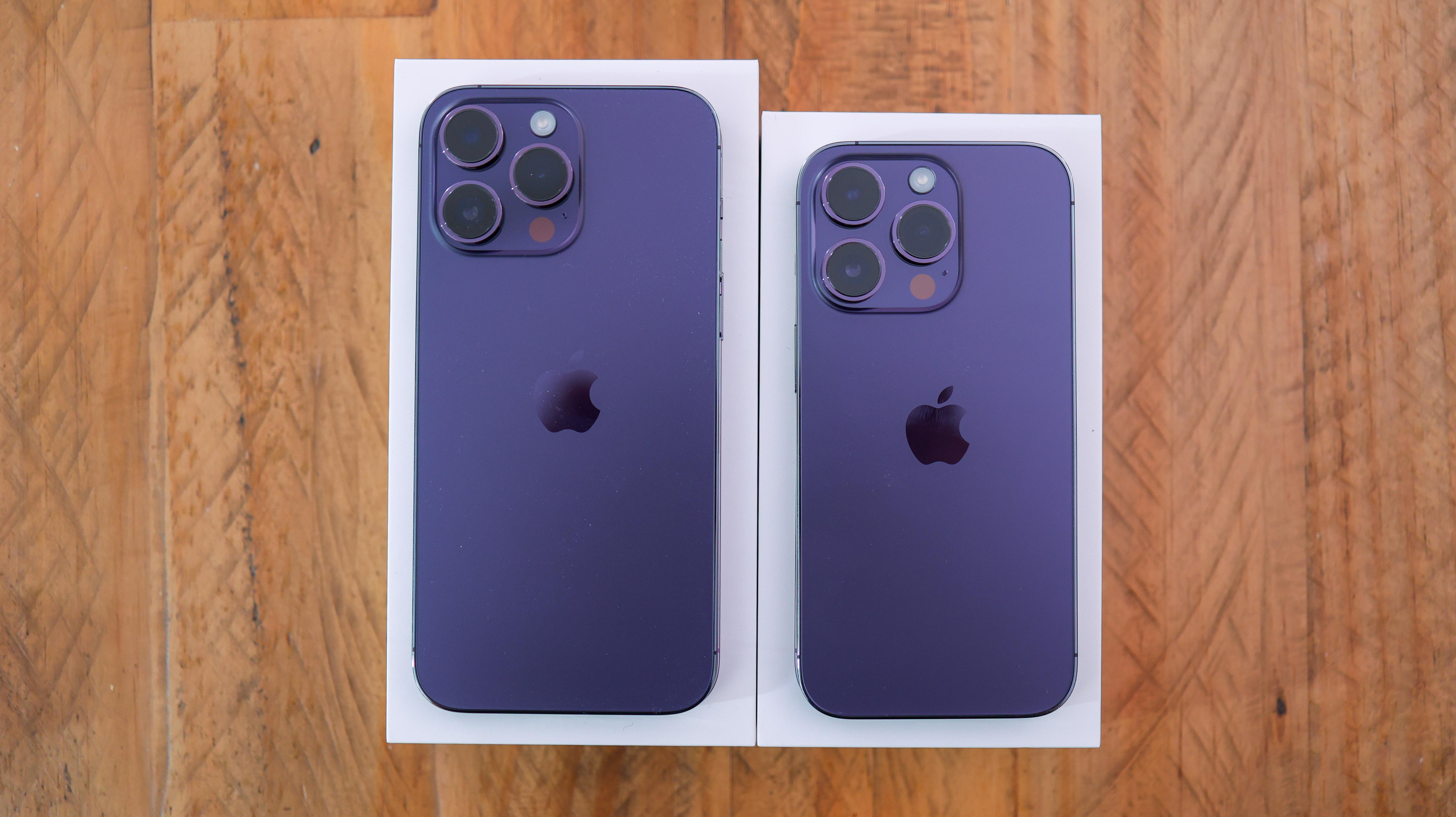
iPhone 14 Pro verdict
The iPhone 14 Pro is a serious, pocketable powerhouse. Yes, it's thick, but its relatively compact footprint and ample camera and power mix make it an enticing option, especially for photographers.
While it's a shame there's no pro mode for manual photography, the 14 Pro's 48MP RAW photos capture excellent results. The automatic mode's photo processing is also one of the best, if not the best, we've seen on a phone. Additionally, while the lack of a periscope zoom is a bugbear when using the Pro, on smaller phones, there's less of an expectation for a far-reaching zoom.
So while the new iPhone 14 Pro is expensive, it's a mighty phone with a brilliant camera, that's powerful and lasts a full day. Is it the best smartphone of 2022? If you're an Apple fan who likes more compact phones, absolutely. If you consider yourself a power user who needs a superior battery and the very best watching experience, then you should think about picking up the 14 Pro Max.
Whether you've got an old or new iPhone, you might also need an iPhone power bank or iPhone charger. Check out the best iPhone printer for some creative fun.
Basil Kronfli is a freelance technology journalist, consultant, and content creator. He trained in graphic design and started his career at Canon Europe before moving into journalism. Basil is also experienced in video production, independently running the YouTube channel TechEdit, and during his time at Future, he worked alongside the Digital Camera World team as a senior video producer.
